Gray-Scott Model at F 0.1100, k 0.0523
These images and movie demonstrate the behavior of the Gray-Scott reaction-diffusion system with σ=Du/Dv=2 and parameters F=0.1100, k=0.0523.
Blue spots on a red background grow to fill the space; larger spots have a bit of an advantage. After the space is filled, larger blue spots force the smaller spots to shrink, and edges remain straight whenever possible; negative lines exhibit surface tension. A similar phenomenon is seen in negative to the east.
Patterns evolve with homotopy: all spots remain as solitons, clumping at the grain boundaries between the large spots and arranging into a hexagonal close packing.
There are six large regions at the end of the movie. After another 1,300,000 tu the region to the lower-right has been reduced to a soliton, precipitating more rapid reduction of two neighboring regions. After that, evolution continues at a much slower rate.
Categories: Munafo σ; Wolfram 2-a (glossary of terms)

 | |||
  |
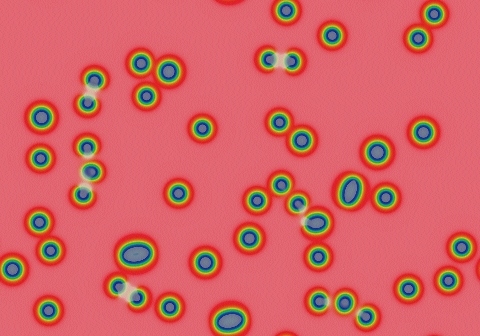
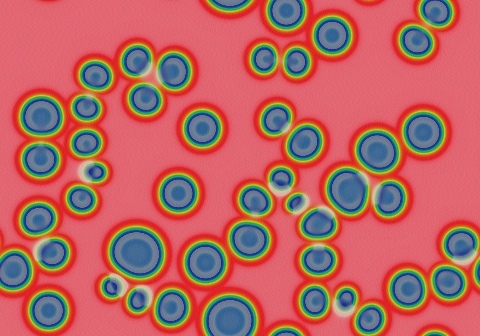
|
15 frames/sec.; each fr. is 1001 iter. steps = 500.5 tu; 1801 fr. total (901,400 tu) |  increase k 
|
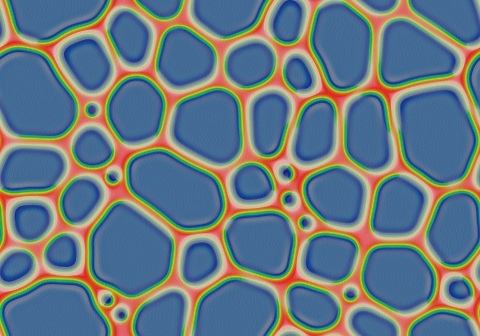
|
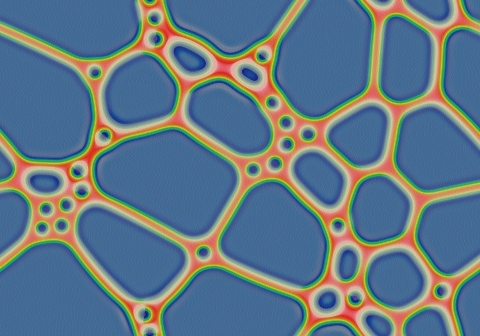
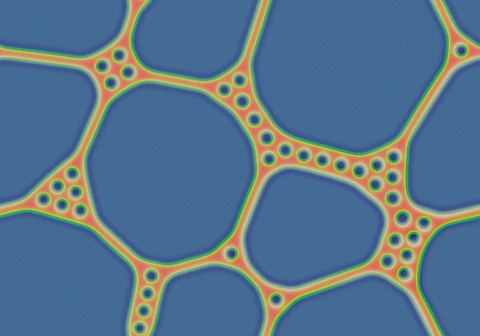
| ||

 |
In these images:
- Color indicates level of u, ranging from purple (lowest u values) through blue, aqua, green, yellow and pink/red (highest u values)
- Areas where u is increasing are lightened to a light pastel tone; where u is decreasing the color is vivid.
- In areas where u is changing by less than ±3×10-6 per tu, an intermediate pastel color is seen. This includes areas that are in steady state or equilibrium.
''tu'' is the dimensionless unit of time, and ''lu'' the dimensionless unit of length, implicit in the equations that define the reaction-diffusion model. The grids for these simulations use Δx=1/143 lu and Δt=1/2 tu; the system is 3.2 lu wide. The simulation meets itself at the edges (periodic boundary condition); all images tile seamlessly if used as wallpaper.
Go back to Gray-Scott pattern index
This page was written in the "embarrassingly readable" markup language RHTF, and was last updated on 2015 Nov 07.
 s.27
s.27